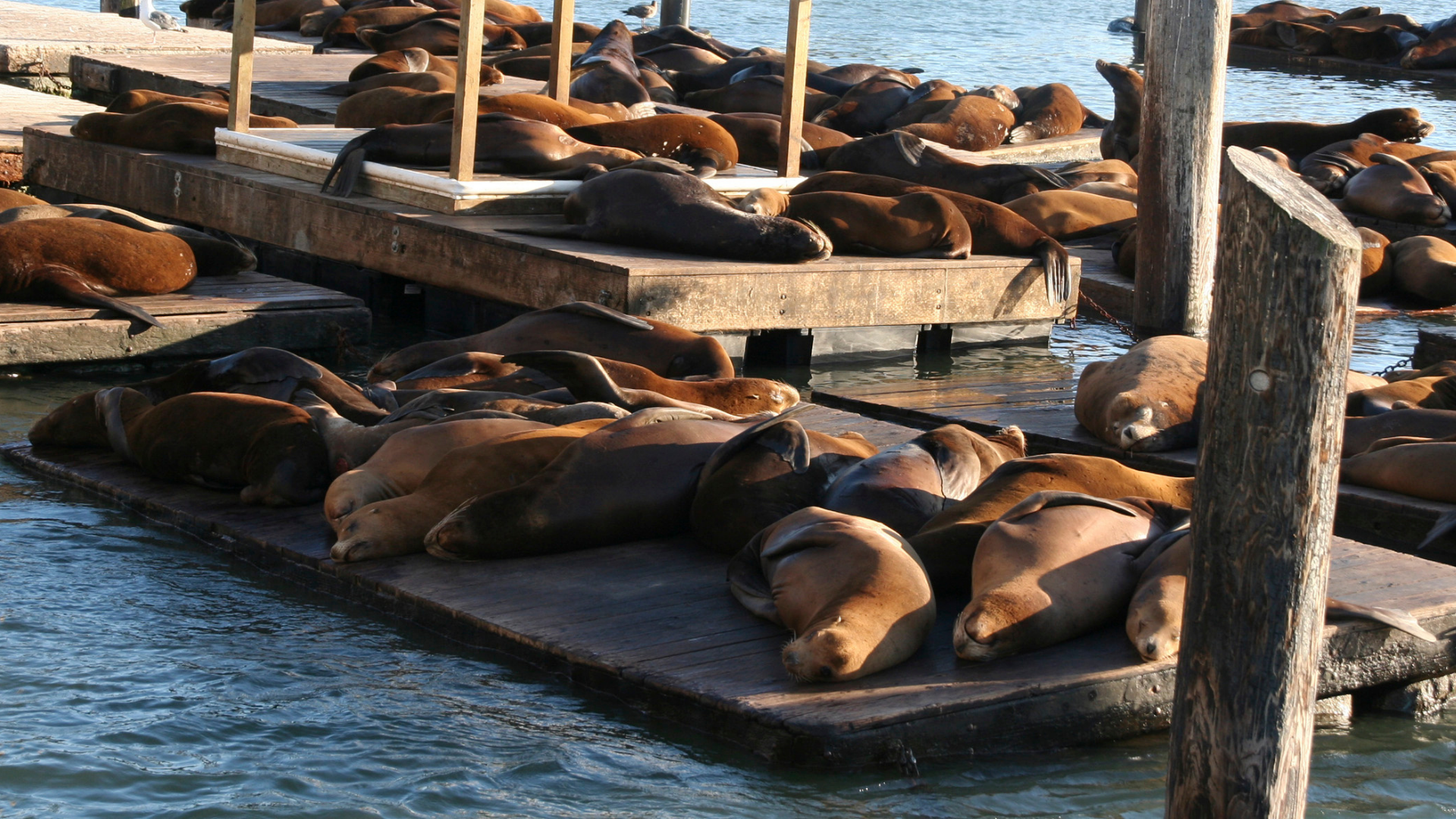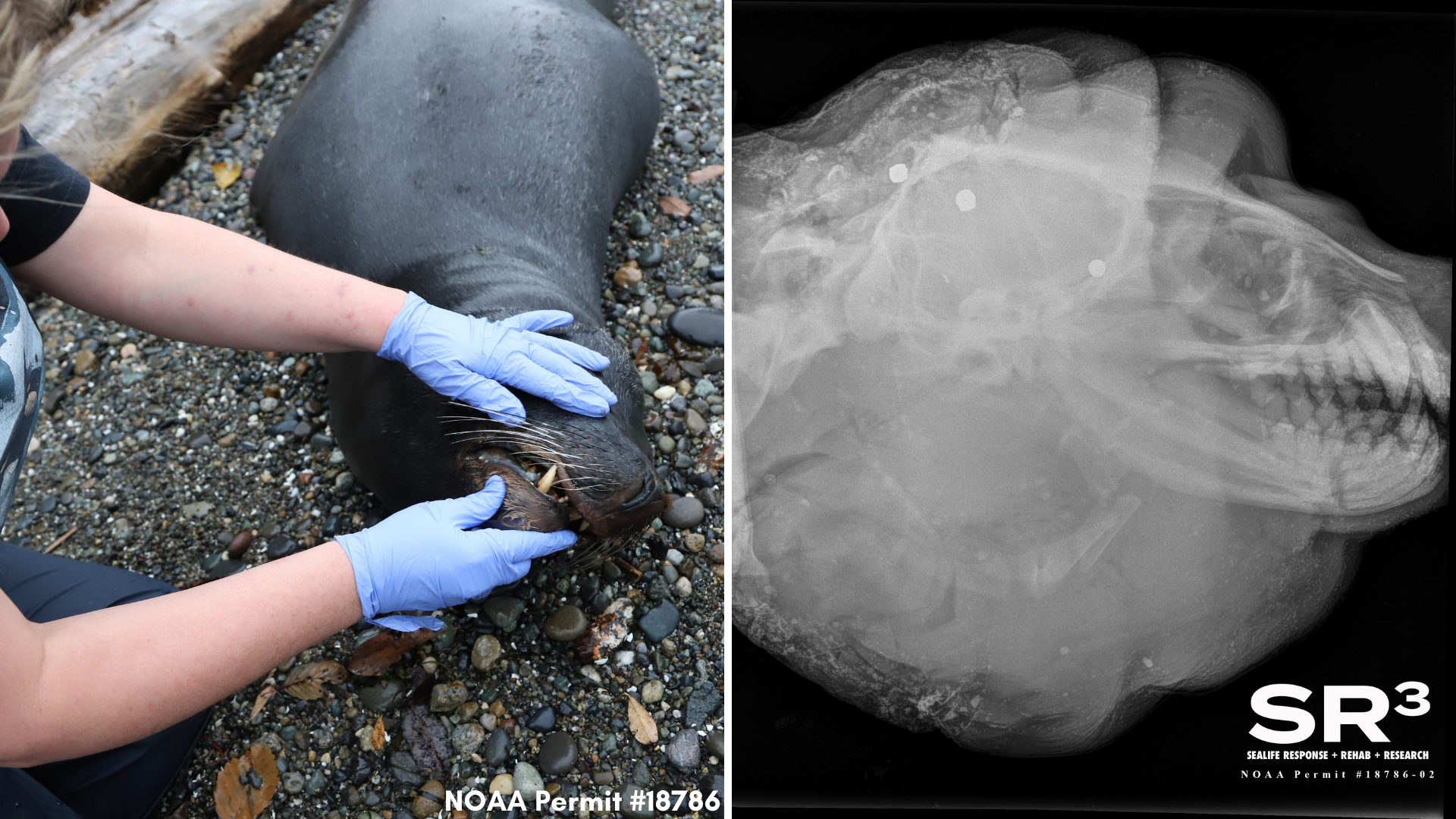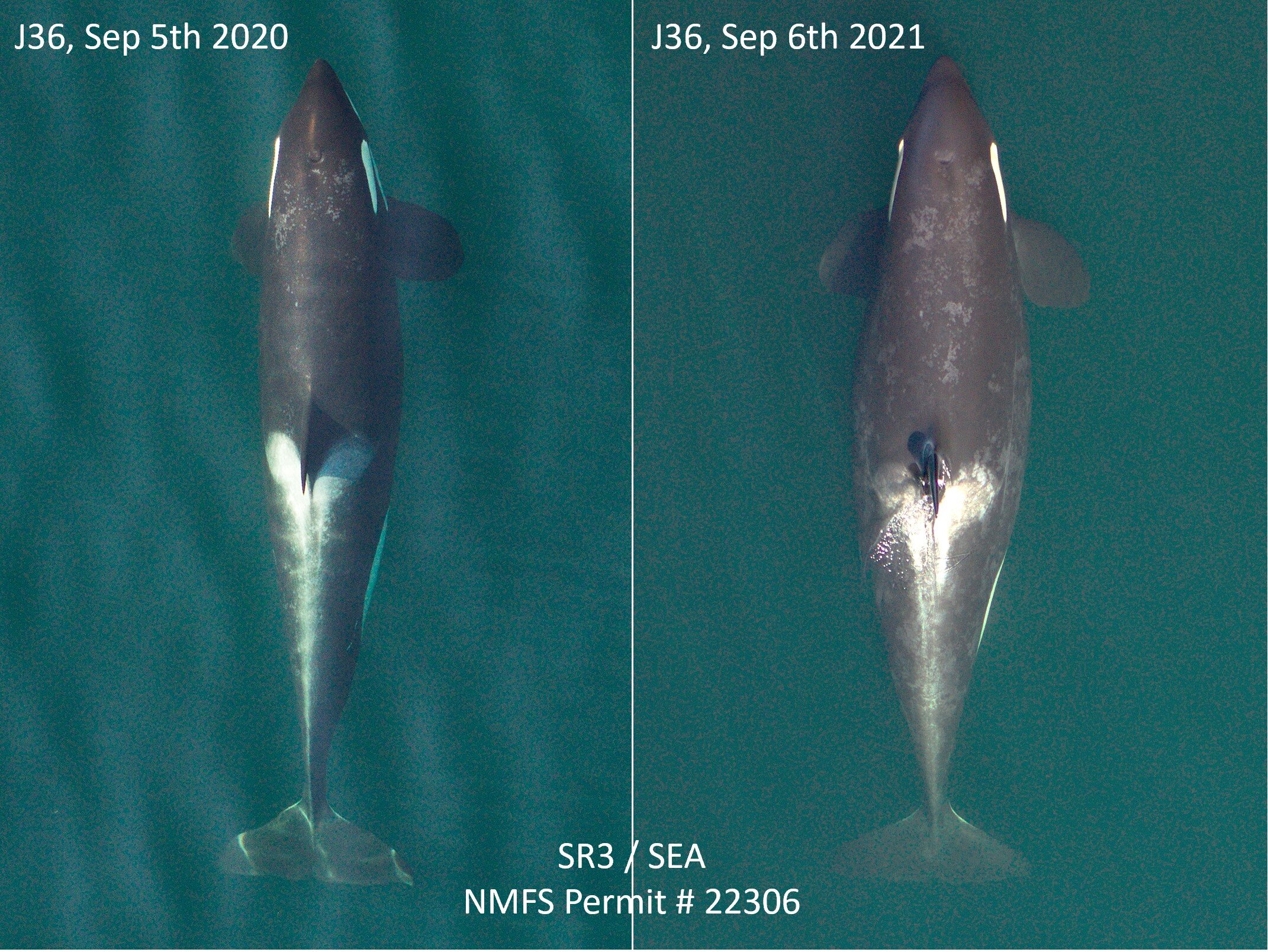In September 2021, we used high-resolution aerial images from non-invasive research drones to document three pregnant whales in J-pod, part of the endangered population of Southern Resident killer whales. These whales clearly displayed the anomalous body shape which results from pregnancy, notably increased width at mid-body as viewed from the air (see left photo). In response the Washington Department of Fish and Wildlife issued an emergency ruling to designate these as vulnerable whales, which prevented commercial whale watching boats from approaching within one-half nautical mile of these individuals or their groups, to protect the whales’ ability to successfully forage.
Over the past month, SR3’s research team of Dr. Holly Fearnbach and Dr. John Durban have collected further drone images of J-pod. Unfortunately, these images have revealed that only one of the three whales (J37) is still pregnant, with J19 and J36 appearing to have decreased significantly in body width. Neither had new calves with them, so they have either lost their pregnancies or experienced neonatal death of a young calf that was not documented over the fall or winter months. We hope J37 continues to support a successful pregnancy: if so, a calving rate of 1/3 of the documented pregnancies will, unfortunately, be consistent with the high rate of reproductive loss that has been documented in recent years by our drone studies and by hormone research conducted by the University of Washington. Unfortunately, reproductive loss has become normal for this population. With only 73 whales remaining, every calf matters.
J36 lost pregnancy: The picture panel above shows her shape change between September 2021,
when increased width at mid-body clearly indicates she was in the latter stages of pregnancy, and
late February 2022 when she was no longer wide in the body and was not accompanied by a calf.
Photos by SR3, collected under NMFS research permit 22306.














